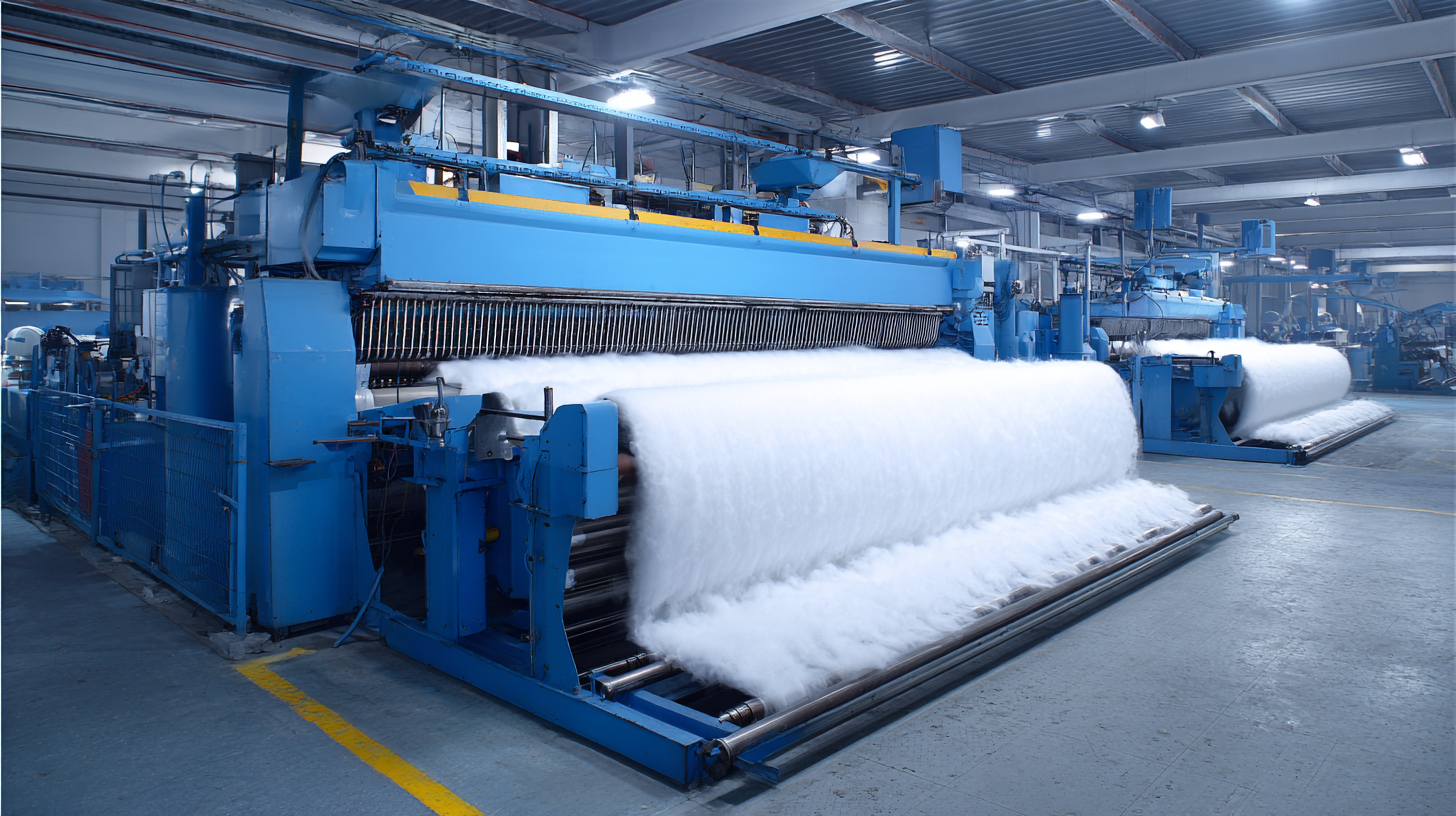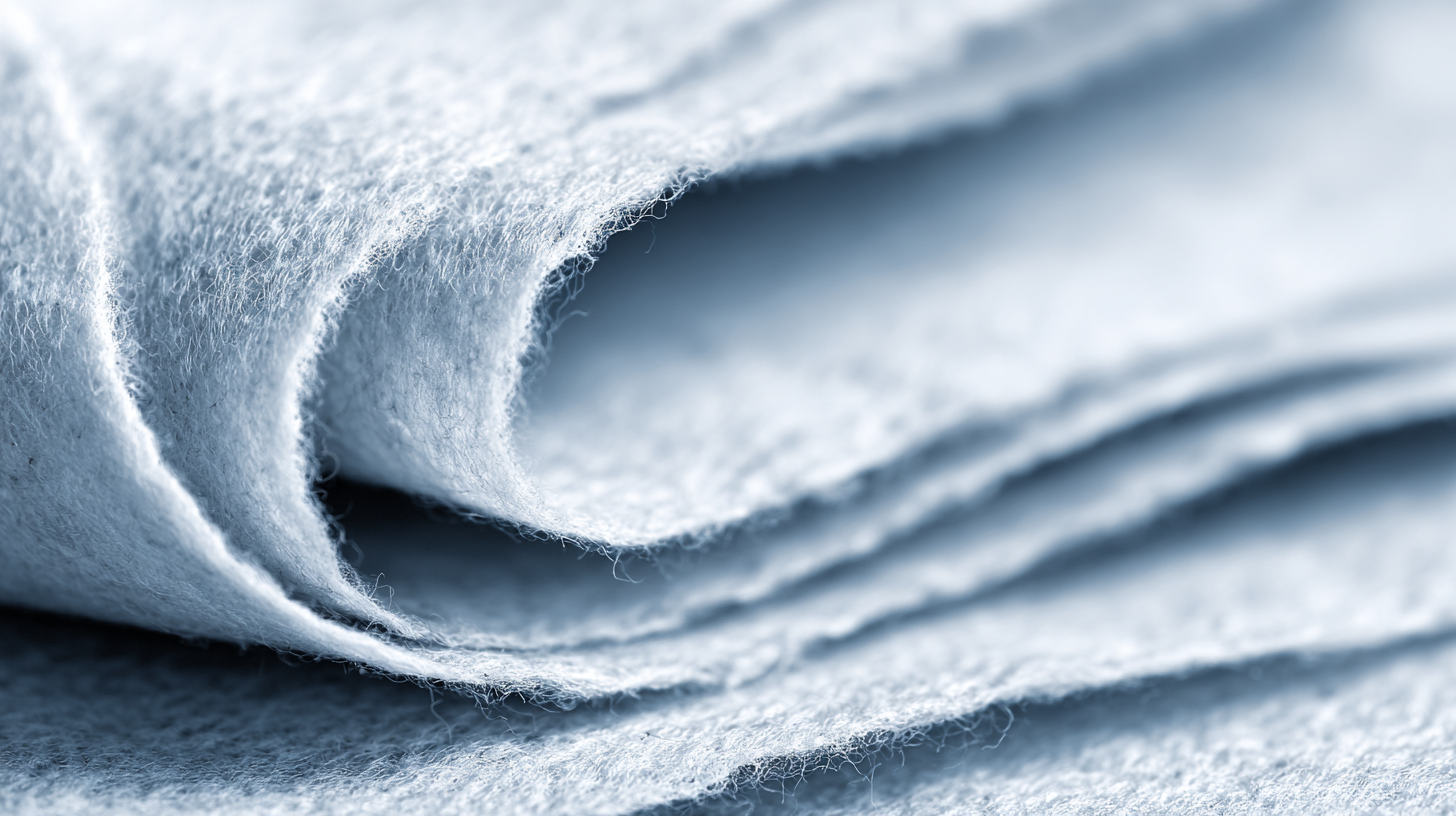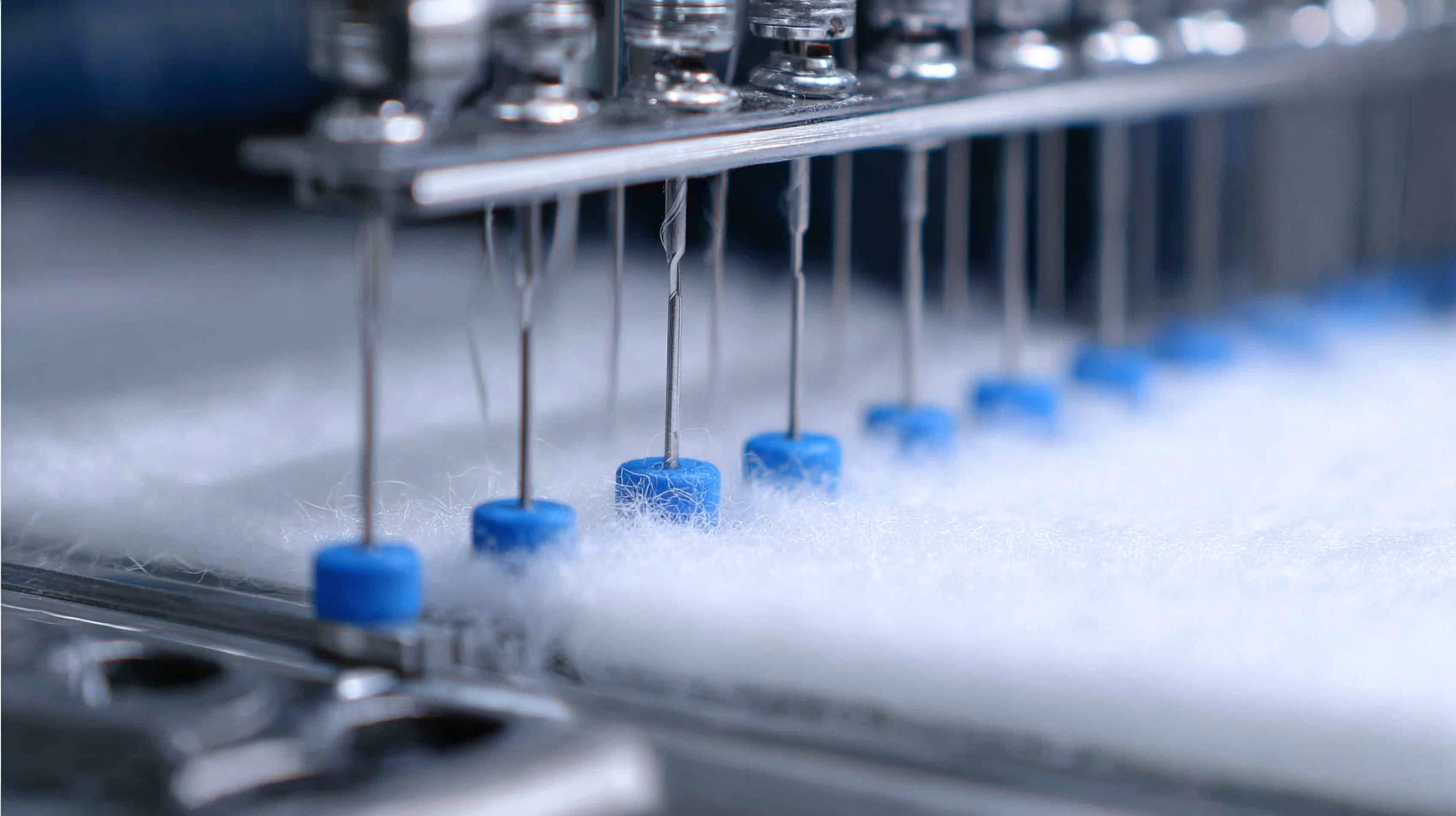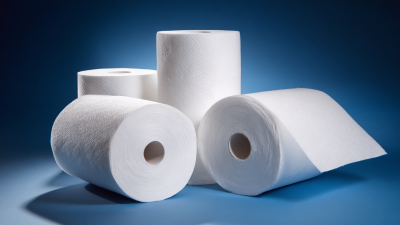
Leave Your Message
-
 CONTACT WhatsApp
CONTACT WhatsApp -

-

-
 CONTACT NUMBER
CONTACT NUMBER -
 CONTACT EMAIL
CONTACT EMAIL





In the rapidly evolving landscape of manufacturing, optimizing production processes is crucial for efficiency and cost-effectiveness. One innovative approach to achieving this is through the use of Nonwoven Fabric Needle Punched technology. This method not only enhances the quality and durability of the products but also streamlines manufacturing workflows by reducing waste and energy consumption.
 By leveraging the unique properties of needle punched nonwoven fabrics, manufacturers can create a wide range of applications, from filtration systems to geotextiles and automotive components. In this guide, we will explore practical strategies to optimize your production process with Nonwoven Fabric Needle Punched technology, highlighting key considerations that can lead to substantial improvements in productivity and resource management.
By leveraging the unique properties of needle punched nonwoven fabrics, manufacturers can create a wide range of applications, from filtration systems to geotextiles and automotive components. In this guide, we will explore practical strategies to optimize your production process with Nonwoven Fabric Needle Punched technology, highlighting key considerations that can lead to substantial improvements in productivity and resource management.
Embracing this technology could transform your operations and position your business for greater success in a competitive market.
Needle punched nonwoven fabric technology is a revolutionary method in textile production that utilizes barbed needles to entangle fibers together, creating a strong and durable material without the need for weaving or knitting. This process begins with a web of fibers, which can be made from various materials, including polyester, polypropylene, or natural fibers. As the needles penetrate the fiber web, they pull and knot the fibers, forming a cohesive structure that possesses excellent tensile strength and resilience.
Understanding the basics of this technology is essential for optimizing production processes. The needle punching method is not only efficient in terms of speed but also reduces waste, as it allows for the use of smaller fiber scraps that would otherwise be discarded. Additionally, the variability of fiber types grants manufacturers the flexibility to customize the properties of the final product, such as thickness, texture, and absorbency. By harnessing these advantages, companies can streamline their operations, enhance product quality, and ultimately, improve profitability in the competitive textile industry.
Needle punched nonwoven fabrics are redefining the manufacturing landscape by offering unique advantages that optimize production processes. One key benefit is their superior strength and durability, making them suitable for a variety of applications, from automotive interiors to geotextiles. The felting process involved in needle punching enhances the fabric's structural integrity, allowing manufacturers to produce high-quality products that withstand rigorous use without compromising on performance.
Additionally, needle punched nonwoven fabrics are cost-effective and versatile. Their manufacturing process typically requires fewer raw materials and less energy compared to traditional woven fabrics. This efficiency not only reduces production costs but also minimizes waste, aligning with sustainable manufacturing practices. The adaptability of needle punched fabrics allows companies to customize products for specific uses, thus expanding their market reach and enhancing competitiveness in an ever-evolving industry. Embracing this technology can significantly streamline operations while delivering outstanding quality and functionality.
| Key Advantages | Description | Impact on Production | Applicable Industries |
|---|---|---|---|
| Cost Efficiency | Reduces raw material costs and labor expense through streamlined processes. | Increases profit margins and lowers overall production costs. | Textiles, Automotive, Filtration. |
| Versatility | Can produce a wide range of fabrics for various applications. | Facilitates customization and quick adaptation to market demands. | Home textiles, Hygiene, Geotextiles. |
| Durability | High strength and durability compared to woven fabrics. | Reduces the need for frequent replacements, saving costs. | Construction, Medical, Automotive. |
| Eco-Friendly | Utilizes less energy and produces less waste during production. | Boosts brand image and appeals to environmentally conscious consumers. | Packaging, Fashion, Nonwoven wipes. |
| Production Speed | Faster production rates compared to traditional fabric techniques. | Shorter lead times and quicker response to market changes. | Apparel, Footwear, Specialty textiles. |
The integration of needle punched nonwoven fabric technology into production processes has shown substantial potential for cost savings and efficiency improvements. According to a recent report by Smithers Pira, the global nonwoven fabric market is projected to reach $50 billion by 2026, driven largely by increasing demand for lightweight, durable materials across various industries. The unique properties of needle punched fabrics, such as enhanced strength and versatility, contribute to their widespread adoption in applications ranging from automotive to construction.

In terms of cost efficiency, needle punched technology can reduce material waste by up to 30% compared to traditional fabric production methods. A study conducted by nonwoven industry analysts at INDA reveals that manufacturers utilizing needle punched techniques have reported a 25% increase in production speed. This acceleration in manufacturing not only boosts output but also diminishes labor costs and energy consumption, leading to a significant reduction in overall production costs. By adopting these innovative materials, businesses can enhance their operational efficiency while simultaneously meeting sustainability goals.
Integrating needle punched nonwoven fabrics into existing production lines can significantly enhance operational efficiency and product quality. According to a report by Smithers Pira, the global nonwoven fabrics market is projected to reach $43.4 billion by 2025, driven largely by advancements in technology and rising demand in various industries, including healthcare and automotive. This growth highlights the importance of adopting best practices that leverage needle punched technology to meet market demands.
One effective strategy involves assessing the current production workflow and identifying areas where needle punched nonwoven materials can be introduced without disrupting overall operations. For example, implementing these fabrics in filtration applications can improve air and liquid filter performance by enhancing their structural integrity, as noted by the Nonwovens Institute. Additionally, automating the needle punching process can reduce labor costs by over 20%, as per data from the National Nonwovens Association. By investing in training for staff on the nuances of needle punching technology, manufacturers can maximize the potential of their production lines and ensure a seamless transition to these innovative materials.

Innovations in needle punched technology are significantly transforming production processes across various industries. As the demand for high-quality, sustainable materials grows, advancements in nonwoven fabric production are stepping up to meet these challenges. The integration of automated systems in needle punching is
streamlining production, enhancing efficiency, and reducing waste. This technology allows for precise control over the fabric's properties, leading to improved performance in applications ranging from automotive components to medical textiles.
Furthermore, the rise of eco-conscious practices is influencing the development of needle punched products. Manufacturers are increasingly exploring bio-based fibers and recycling techniques to create sustainable alternatives while maintaining the durability and versatility that nonwoven fabrics are known for. These innovations not only cater to the rising consumer demand for sustainability but also position companies to comply with stringent environmental regulations. As the industry evolves, ongoing research and development in needle punched technology will continue to push the boundaries, fostering a more efficient and sustainable production landscape.






